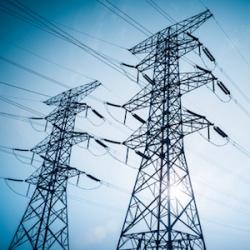
In 2009 the U.S. government attended the United Nations Climate Change Conference in Copenhagen and pledged to reduce overall greenhouse gas emissions 17 percent by 2020.
To make it happen, the Obama administration directed the U.S. Environmental Protection Agency to lead the way starting with carbon dioxide (CO2) and that resulted in the Clean Power Plan (CPP) in 2015. While the goal was laudable, no one is in favor of more pollution, it was a blunt instrument because it unfairly penalized fossil fuel power plants in order to provide nearly half the overall reductions the Obama administration sought under the Paris Agreement commitment. Energy is a basic need so it didn't make much sense to unfairly penalize the poor with increased costs for unknown benefit.
The Paris Agreement is now gone in America, what federal politicization of science giveth politicization of science can taketh away, but the emissions reductions the government sought still happened despite a lack of regulations and for that we can thank American science and technology.
Though the added regulations have not come to pass, that's been a good thing. Without onerous cost increases on the poor, built-in higher rates due to solar and wind programs aside, the free market has continued to cause CO2 emissions to plummet, so much so that in 2017 America reached the CPP’s desired 2025 target. That's not due to solar or wind, finds the study in Environmental Science & Technology, it is overwhelmingly due to natural gas. Thanks to modern natural gas extraction techniques such as hydraulic fracturing, power plant emissions have declined from 2.7 billion tons in 2005 to 1.9 billion tons in 2017, a reduction of almost 30 percent.
Historical and projected CO2 emissions from the U.S. power sector in relation to natural gas prices (as delivered to electric generators). Projected emissions and gas prices are national averages based on scenarios in the AEO 2017 for the reference case and the high oil and gas resource and technology case.
Though it is hoped that subsidies for solar and wind will eventually pay off, the emissions savings right now have largely been in natural gas and at the expense of coal, whose emissions are back at 1970s levels. The same efficiencies that have gone into making 4K big screen televisions cheaper than an iPhone have been leveraged to vault America into energy dominance again, with less pollution. While American emissions have dropped, global emissions have increased 21 percent. Like in agriculture, if the rest of the world adopted American acceptance of science and technology when it comes to energy, our environmental footprint would plummet without impacting the poor in a negative way. Instead, it would be positive. A billion people in the developing world use decentralized fuel for heating and cooking, things like wood. With centralized power plants, yes even using fossil fuels, their emissions would decline as rapidly as ours have and their standard of living would rise.
If the federal government stays out of picking winners and losers in energy, the trend toward lower emissions is likely to continue. As Erik Solheim, Executive Director of the United Nations Environment Programme predicted, "In all likelihood, the United States of America will live up to its Paris commitment, not because of the White House, but because of the private sector."
That's something we can all cheer.
And cheer it we do. When government gets it right about science, we tell them, and when they get it wrong, we tell them that too. We are in our 40th year of calling out bad science and promoting the good kind. And I thank you for making that possible.
This article first appeared in the American Council on Science and Health print magazine Priorities.



